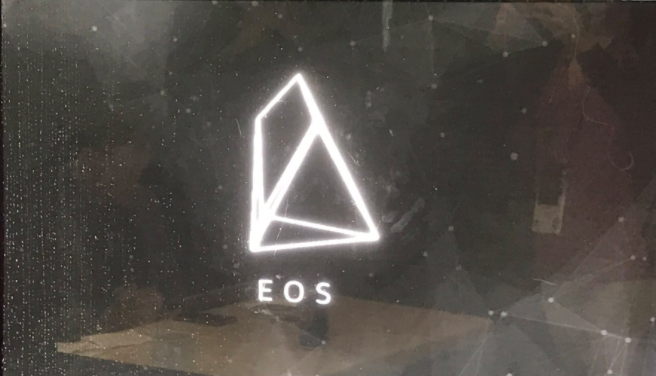What is EOS !!!!

#EOS.IO software introduces a new @blockchain architecture designed to enable vertical and horizontal scaling of decentralized applications. This is achieved by creating an operating system-like construct upon which applications can be built. The software provides accounts, authentication, databases, asynchronous communication and the scheduling of applications across hundreds of CPU cores or clusters. The resulting technology is a blockchain architecture that scales to millions of transactions per second, eliminates user fees, and allows for quick and easy deployment of decentralized applications.
Without permission, anyone may use, reproduce or distribute any material in this white paper for non-commercial and educational use (i.e., other than for a fee or for commercial purposes) provided that the original source and the applicable copyright notice are cited.
#EOS.IO software utilizes the only decentralized consensus algorithm capable of meeting the performance requirements of applications on the blockchain, Delegated Proof of Stake (DPOS). Under this algorithm, those who hold tokens on a blockchain may select block producers through a continuous approval voting system and anyone may choose to participate in block production and will be given an opportunity to produce blocks proportional to the total votes they have received relative to all other producers. For private blockchains the management will use the tokens to add and remove IT staff.
The EOS.IO software enables blocks to be produced exactly every 3 seconds and exactly one producer is authorized to produce a block at any given point in time. If the block is not produced at the scheduled time then the block for that time slot is skipped. When one or more blocks are skipped, there is a 6 or more second gap in the blockchain.
Using the EOS.IO software blocks are produced in rounds of 21. At the start of each round 21 unique block producers are chosen. The top 20 by total approval are automatically chosen every round and the last producer is chosen proportional to their number of votes relative to other producers. The selected producers are shuffled using a pseudorandom number derived from the block time. This shuffling is done to ensure that all producers maintain balanced connectivity to all other producers.
If a producer misses a block and has not produced any block within the last 24 hours they are removed from consideration until they notify the blockchain of their intention to start producing blocks again. This ensures the network operates smoothly by minimizing the number of blocks missed by not scheduling those who are proven to be unreliable.
Under normal conditions a DPOS blockchain does not experience any forks because the block producers cooperate to produce blocks rather than compete. In the event there is a fork, consensus will automatically switch to the longest chain. This metric works because the rate at which blocks are added to a blockchain chain fork is directly correlated to the percentage of block producers that share the same consensus. In other words, a blockchain fork with more producers on it will grow in length faster than one with fewer producers. Furthermore, no block producer should be producing blocks on two forks at the same time. If a block producer is caught doing this then such block producer will likely be voted out. Cryptographic evidence of such double-production may also be used to automatically remove abusers.
Transaction Confirmation
Typical DPOS blockchains have 100% block producer participation. A transaction can be considered confirmed with 99.9% certainty after an average of 1.5 seconds from time of broadcast.
There are some extraordinary cases where a software bug, Internet congestion, or a malicious block producer will create two or more forks. For absolute certainty that a transaction is irreversible, a node may choose to wait for confirmation by 15 out of the 21 block producers. Based on a typical configuration of the EOS.IO software, this will take an average of 45 seconds under normal circumstances. By default all nodes will consider a block confirmed by 15 of 21 producers irreversible and will not switch to a fork that excludes such a block regardless of length.
It is possible for a node to warn users that there is a high probability that they are on a minority fork within 9 seconds of the start of a fork. After 2 consecutive missed blocks there is a 95% probability a node is on a minority fork. With 3 consecutive missed blocks there is a 99% certainty of being on a minority fork. It is possible to generate a robust predictive model that will utilize information about which nodes missed, recent participation rates, and other factors to quickly warn operators that something is wrong.
The response to such a warning depends entirely upon the nature of the business transactions, but the simplest response is to wait for 15/21 confirmations until the warning stops.
EOS in few Words :
The EOS.IO software is designed from experience with proven concepts and best practices, and represents fundamental advancements in blockchain technology. The software is part of a holistic blueprint for a globally scalable blockchain society in which decentralised applications can be easily deployed and governed.
Follow me @sayyedraza
will do it same
Thanks for posting. I'm such a big fan of Dan, so I am very interested in EOS.